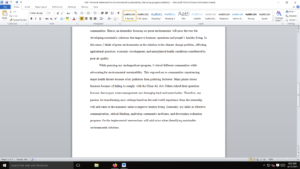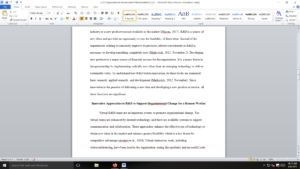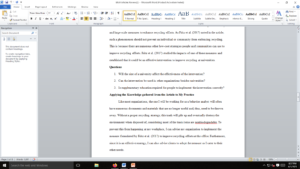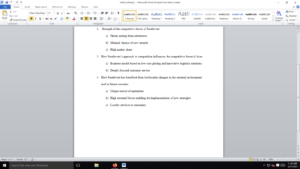Environmental risk
Nature itself presents hazards to human health, including disease, natural poisons, and radiation. Regulators use a process called environmental risk assessment to decide whether they need to take risk management steps in relation to a risk. In this activity, you will carry out three steps of an environmental risk assessment called release analysis, exposure analysis, and health effects analysis. This activity will require outside research in addition to the textbook and will set the stage for a larger assignment in Week 4.
Instructions
Write a 1-2 page paper using the following instructions.
Select an environmental risk that occurs in nature, and research information about its release, exposure scenarios, and health effects. The specific data in each area of the analysis will depend on the environmental risk you choose. Write at least one paragraph for each analysis:
- Release Analysis: Identify the contaminant, and how it is released, measured, or detected. Include units of measurement, setting for the release, and scientific fields related to the contamination or measurement.
- Exposure Analysis: Analyze the risk of exposure such as settings in which people encounter the risk or plausible scenarios in which exposure occurs.
- Health Effects Analysis: Estimate the risks to human health, including short and long-term effects, demographic groups at risk, and health effects on individuals and populations.
- Use 1-2 sources to support your writing. Choose sources that are credible, relevant, and appropriate. Cite each source listed on your source page at least one time within your assignment. For help with research, writing, and citation, access the library
Links to an external site. or review library guides
This course requires the use of Strayer Writing Standards (SWS). The library is your home for SWS assistance, including citations and formatting. Please refer to the Library site
Links to an external site. for all support. Check with your professor for any additional instructions.
Requirements: 2 pages
Answer preview
The final phase of an environmental risk assessment is undertaking a health effect analysis. Doing this allows an investigator to estimate the risk a hazard poses to people’s health, including short- and long-term health impacts, the demographic groups at risk, as well as the health impacts on individuals and communities. A heat wave can have adverse health impacts on individuals and populations (Disher et al., 2021). These adverse health impacts are not solely caused by the heat itself but also by other attributes, such as the intensity, duration, and frequency of a heat wave (Disher et al., 2021). Furthermore, a heat wave often covers an extensive area, exposing many people to hazardous heat, which can be immensely taxing on a person’s body (Disher et al., 2021). A person’s body struggles to cool itself when it is immensely hot. This causes the body’s temperature to risk, increasing the risk of experiencing a heat-related illness such as heat cramps, heat strokes, or heat exhaustion (Disher et al., 2021).
[896 Words]
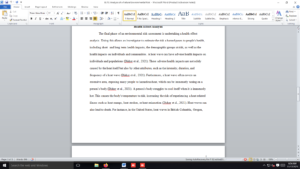
Environmental risk



